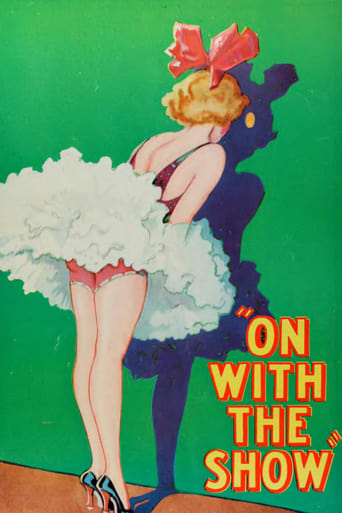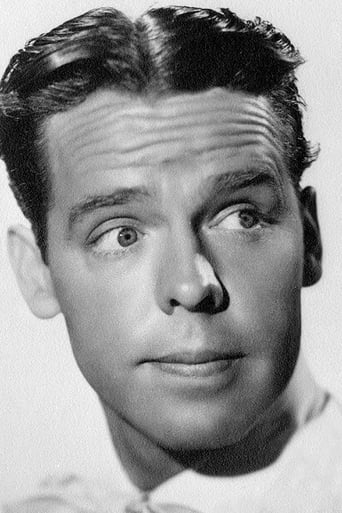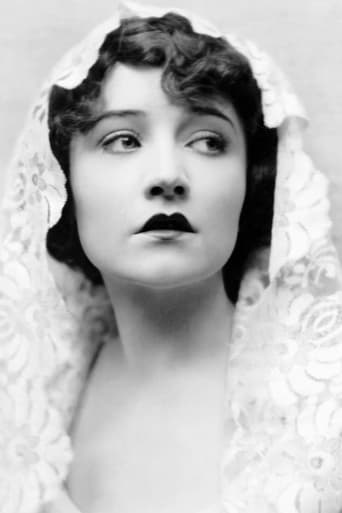

On With the Show! (1929)
With unpaid actors and staff, the stage show Phantom Sweetheart seems doomed. To complicate matters, the box office takings have been robbed and the leading lady refuses to appear. Can the show be saved?
Watch Trailer
Cast


Reviews
Released in 1929, On With the Show was filmed during the transitional period when silent films became talkies. Some films seemed little more than a collection of vaudeville acts strung together (a tradition that lasted, to some extent, even through the forties). Much of the acting is over the top and overly broad, because silent film stars were directed that way and vaudeville/stage performers have to play to the last seat in the theater. It is precisely the fact that OWTS captures that transitional period that makes it so interesting and so entertaining.The film is basically a presentation of a stage musical, similar to Showboat, with some backstage scenes involving characters in the stage show. In its attempt at authenticity, the camera often films too broadly, sometimes including the entire proscenium arch.The sets for the play with the film are beautiful, even when viewed in B&W. The play is a lavish production, sometimes reminiscent of a Busby Berkley production. The action includes a motorcycle, mounted horsemen and dogs running across the stage.In the dance numbers, we see plenty of minstrel-like troupers dancing in rows. The actual dances they perform are rather amateurish by today's standards. Only the black tap dancers display superior talents and demonstrate that tap dancing has not changed so much, fundamentally, over the years. It was already a mature art form.A few performances had little to do with the stage play, if anything. But that seems true to the times. Most notable is Ethel Waters. who performs two enjoyable numbers that highlight her vocal talents.Joe E. Brown is a lot of fun to watch. His comedic timing is precise in this film. He also performs a specialty dance that shows him to be a real athlete.Three actresses play significant parts in the story. It is interesting to note their backgrounds.Betty Compson plays Nita, the actress who portrays the Phantom Girl in the musical. Betty had a strong background in Vaudeville, where she started out as a teen violinist. She appeared in 9 films release in 1929.Sally O'Neill plays the part of Kitty, the coat check girl who saves the play by going on stage. Sally also had a solid vaudeville background and appeared in 8 films released in 1929.Louise Fazenda plays an actress whose sole contribution to the play is a wild, offstage laugh. Louise had a background in silent films, but made the transition to talkies. She appeared in 10 films released in 1929.I found much of the music enjoyable. Some had silly lyrics, which was common. Consider the lyrics "Drink your julep with your two lips"--fun to hear.In the end, OWTS is very dated and that is why it is such a hoot to watch. It captures many bits of the era's humor and preserves actual pieces of vaudeville.
Early Warner Bros. musical, stagy, slow, and mostly of historical interest. The poor quality film available for viewing doesn't help. It's interesting to see how much the movie musical improved between this movie and, for instance, "42nd Street" (also a Warner Bros production) just a few years later. The dialog portions are very static, presumably due to the requirements of early sound pick up systems. However, the result is to bring the action to a halt. The overacting is almost unintentionally laughable. Betty Compson finally has a decent scene near the end of the movie. Arthur Lake is just plain irritating, and I couldn't even warm up to Joe E. Brown. Some of the singers seems to be recorded live, and others poorly dubbed. By far, the most interesting scenes are Ethel Waters singing "Am I Blue", and the quartet of black tap dancers who are unidentified.
When I saw "On With the Show" on Turner Classic Movies, I was very disappointed in the poor quality of the picture and the sound, but was very pleased by some clever dialog, although realizing some of it was not so clever, and I was absolutely in awe of the performance of Betty Compson.She was not only lovely just to look at, in her big scene near the end, she stole the show.She was more than charming -- she was adorable.Joe E. Brown's presence in a movie is usually enough to make me skip it but here he is toned down considerably, is not so silly, and he performs an eccentric dance with a surprising athleticism. I actually liked him in "On With the Show." Sally O'Neil was surprising. She sounded at first like some precocious child, with little-girlish voice, but when this caterpillar bursts out of her cocoon, she is a star.One other aspect of this film is almost unique for its time: The cast is integrated. Right there on stage are black dancers with white dancers, although to be accurate there is not interaction between white and black. Still, it was a start.Ethel Waters made what was apparently her film debut, and surely was an immediate hit since she was already a star in other media.A 21st century viewer of "On With the Show" must consider context, remember the times in which it was made, during the changeover from silents to talkies, to be able to appreciate it fully.There were lots of great individual talents involved, and a viewer should try to ignore the poor framing of the scenes and the poor quality of the sound, at least some of which might be because of the age or even generation of the print.But appreciate the historicity as well as the talent, and you will enjoy "On With the Show" as much as I did.
OK, so it's the old story about what goes on backstage in the production of a Broadway musical----even to the cliché of the star getting sick and the understudy taking her place and becoming a big star. Many critics see this as the inspiration for 42nd STREET, but this film has the period charm that only the transitional talkie musicals could have. Part of it is quite stagebound-----including musical numbers as you probably would have seen them on the Broadway stage in the 1920's, so if you don't care for very early musicals, you'd better pass on this one. This was the film that introduced the song "Am I Blue" sung by a very young Ethel Waters, and followed by the even better "Birmingham Bertha" with black dancer John Bubbles. You should be warned that there are black dancers in the cast who wear some outrageous politically incorrect costumes---including one number where their costumes have watermelon stripes on them! And seeing Joe E. Brown as a mean comedian who constantly argues with Arthur Lake (better known as Dagwood Bumstead in the BLONDIE Series) will be something of a revelation to his fans. The film was made in the early two-strip Technicolor process, which unfortunately has yet to be found, but is still quite enjoyable in B & W. Remember, although this is a very charming transitional talkie musical, modern audiences will only see it as a horribly dated antique.




